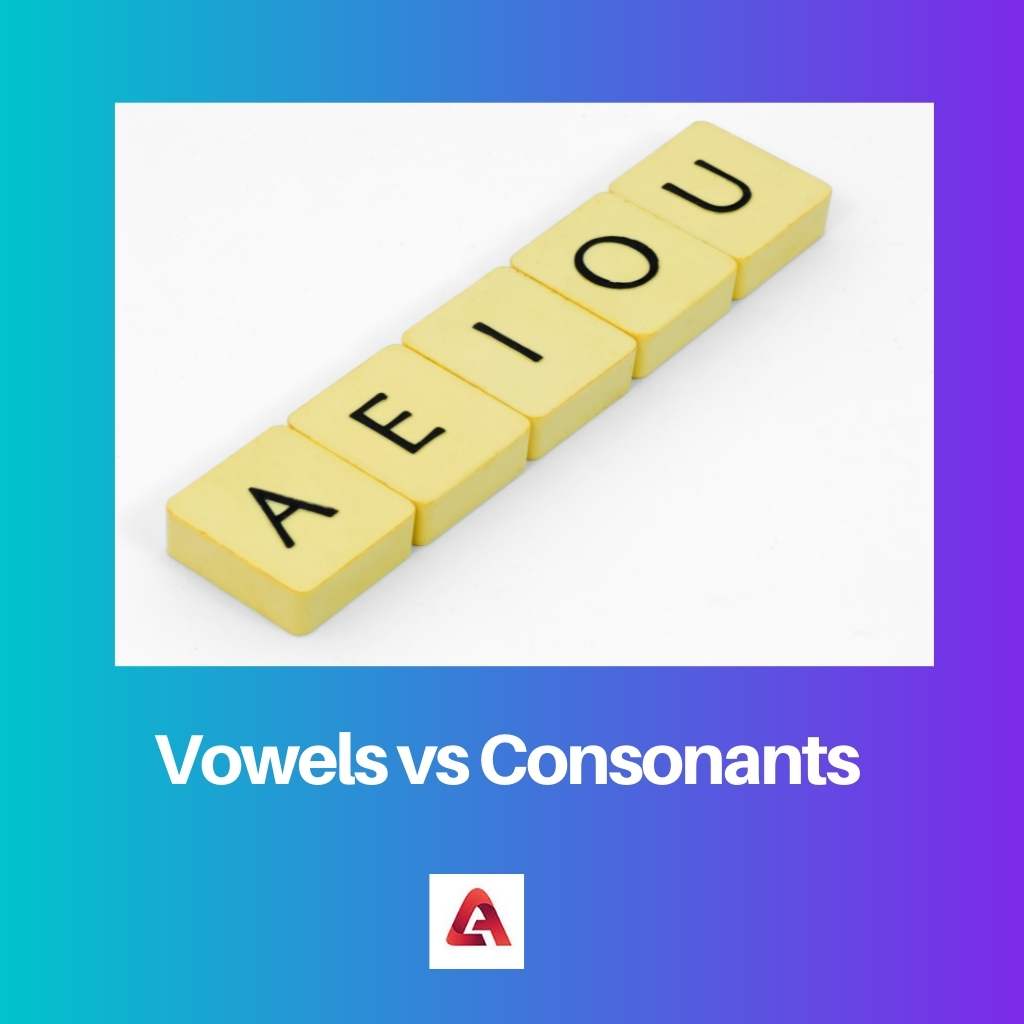To begin with, we were all taught in primary school that the English alphabet is categorized into two groups based on speech sounds: vowels and consonants.
There is a significant difference between them as far as it is concerned. It’s all about the sound made while pronouncing a vowel and a consonant.
There’s a brief difference between the sound made by both. It’s used in the formation of many words and produce different speech sound.
In the English alphabet, there’re five vowels a, e, i, o, u, and sometimes ‘y’, while there’s a total of 21 consonants.
Key Takeaways
- Vowels are sounds made with an open vocal tract, while consonants are sounds made with a partial or complete closure of the vocal tract.
- Vowels are the building blocks of syllables, while consonants provide the structure and shape of words.
- Vowels are pronounced with a clear sound, while consonants can have a more subtle or muted sound.
Vowels vs Consonants
The difference between vowels and consonants is that a vowel is a speech sound that is formed without constraint in the vocal tract. In contrast, a consonant is a speech sound that is produced with a restriction in the vocal tract.

A vowel is a speech sound produced by the vocal cord vibrating without any constriction in the vocal tract during pronunciation.
Therefore, while pronouncing a vowel, lips, teeth, and roof of the mouth don’t touch each other. An important thing, vowels can both refer to vowel sounds and letters in the alphabet.
The consonants are speech sounds made during pronunciation with restrictions in the vocal tract. It is accompanied by partial or complete closure of the vocal tract.
Due to partial or complete closure, the lips, teeth, or roof of the mouth may touch each other. Also, it can be accompanied by some restrictions on vocal cords.
Comparison Table
| Parameters of comparison | Vowels | Consonants |
|---|---|---|
| Speech sound | In a vowel, speech sound is without any restriction of the vocal tract. | In consonant, speech sound is restricted in the vocal tract accompanied by vibration of the vocal cord. |
| Touch | There’s no touching of lips, teeth, or mouth while pronouncing a vowel. | There’s touching of lips, teeth, or mouth while pronouncing a consonant. |
| Total number of alphabets in English | There are 5 vowels. | There are 21 consonants. |
| Total number of sounds in English | There are 20 vowel sounds. | There are 24 consonants sounds. |
| Syllable | A vowel is the main part of the syllable. | In contrast, the consonant is dependent on a vowel for the formation of a syllable. |
What is Vowel?
A vowel is a speech sound that is produced without friction in the vocal tract and with the vocal cord vibrating during pronunciation.
Since there are no restrictions, the lips, teeth, and tongue do not come into contact with one another while pronouncing it.
A vowel may refer to a vowel sound and vowel letter in the English alphabet. While in English, it refers to both vowel sounds and vowel symbols.
Quality in loudness and quality(length) also varies in vowels. There’re other variations, such as tone, intonation, and stress.
In English, there’re five vowels a, i, e, o, and u. ‘Y’ is considered as a vowel in some circumstances, such as cry, fly, etc.
A specific vowel can be present in different words with different speech sounds. As a result, there is a particular vowel sound that cannot be expressed only by vowels.
For example, examining these words, Hey(heɪ), He(hi), Her(həː), Heir(ehr), all these have a different sound of the vowel.
Likewise, the same vowel sound can be seen in different vowels containing words. For example, in the words they, may, rain, and cake, the ‘ei’ sound is produced.
However, there are five vowels. But different sounds can’t be represented solely by vowels.

What is Consonant?
Consonants is a speech sounds produced during pronunciation accompanied by partial or complete closure of vocal cords.
There is partial or complete closure that results in touching lips, teeth, or tongue. Sometimes, there’s a restriction in vocal cords at a specific point.
Similar to vowels, consonants refer to both sounds and letters. Apart from five vowels, all are consonants.
Although there are 21 consonants, it represents 24 consonant sounds. In contrast to the English alphabet, there are more consonants sound than consonants.
A consonant can have different sounds. For example, the ch sound in ‘chair’ and ‘charade”.
The sound of ch varies in the mentioned word.
In the formation of the syllable, the consonant is dependent on the vowel. Unlike, A vowel is the main part of the syllable.
In many circumstances, ‘Y’ is considered a vowel and consonant due to the speech sound produced during pronunciation.
For example, ‘yesterday’ is pronounced as ‘Jesterday’, where J is a consonant. And ‘Style’ is pronounced as ‘stile’ where i is a vowel. Therefore, it is considered a vowel and a consonant accordingly.
Consonants are also very necessary for the formation of syllables like vowels. Even though there is a dependency on the vowel, thus, it is required to understand the phonetics of consonants.

Main Differences Between Vowels and Consonants
The difference in the production of speech sounds while pronouncing is a significant difference between vowels and consonants.
The speech sound of a vowel is unconstrained, while the speech sound of a consonant is constricted to a certain extent by the vocal cords. And followed by partial or complete closure of the vocal tract.
- Vowels produce speech sounds without any restriction in the vocal cord, whereas consonants produce speech sounds with a constriction in the vocal cord.
- In vowels, there’s no disturbance due to mouth, teeth, and lips touching each other, whereas, in consonants, there’s disturbance due to mouth, teeth, and lips touching each other.
- In the English alphabet, there are five vowels, while there are 21 consonants.
- The vowel is the most significant element of the syllable, whereas the consonants rely on the vowel to create the syllable.
- There is a total of 20 vowel sounds in English, and there are a total of 24 consonant sounds.




